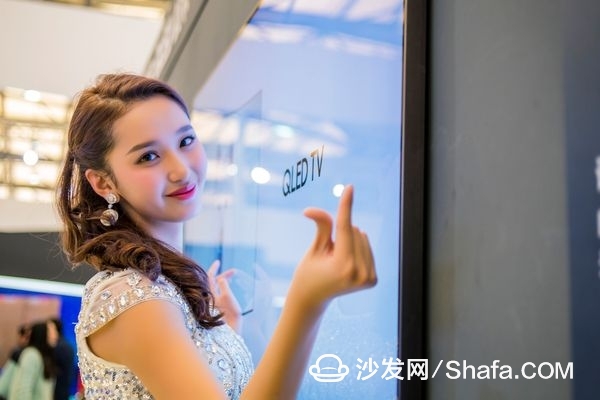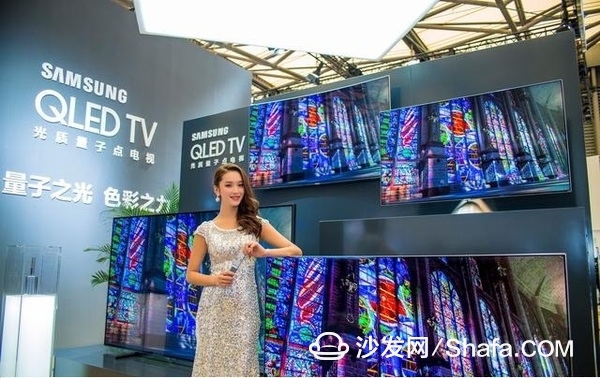Three Talks about QLED's Success in Technology Stable Prices
Rigid-flex board is a circuit board with FPC characteristics and PCB characteristics formed by combining flexible circuit boards and rigid circuit boards according to relevant process requirements through lamination and other processes.
The rigid-flex board has both the characteristics of FPC and the characteristics of PCB. Therefore, it can be used in some products with special requirements. It has both a certain flexible area and a certain rigid area, which saves the internal space of the product and reduces the The finished product volume is of great help in improving product performance.
Rigid-Flexible Board,Rigid-Flexible Circuit Board,Rigid-Flexible PCB Fabricator,Rigid-Flexible PCB Manufacturer,Rigid-Flexible PCB Supplier Huizhou Liandajin Electronic Co., Ltd , https://www.ldjpcb.com
OLED TVs have been developing for several years and have not found a reasonable position between sales and high-end. As a result, IHS DisplaySearch has repeatedly revised prediction data. Samsung, the leader of global TV, used QLED TV to teach successful experience: Only high-end products with stable technology and affordable prices can win consumers' recognition. 
The rapid momentum of the market
Downgrading, correcting, and slower than expected are key words for the growth of OLED TVs in the past two years. Because of the poor performance of OLED TVs and the prediction of correcting them once, IHS DisplaySearch, a company known for its research on global TV shipments, has also been experiencing embarrassment.
Before 2014, NPD DisplaySearch predicted that there will be more than 1 million OLED TV shipments in 2014; by 2016, the market penetration rate of OLED TVs is expected to exceed 3%. However, the result was counterproductive. DisplaySearch statistics show that in 2015, OLED TVs had 340,000 units shipped, and 2016 shipments of OLED TVs were off by 3% (according to 200 million units in the world, 3% or 6 million units). There is a big difference, only 720,000 units. 
Obviously, the performance of OLED TVs in the market in the past two years can be described as "the ideal is very full and the reality is very edgy." This is a genius with OLEDs from the very beginning. It is technically necessary to replace LCDs, and at the same time, the price is very unfriendly. The QD TV has demonstrated the "close to the consumer" side since its listing.
First, in terms of technical propaganda, quantum dots technology has been upgraded to a greater extent than liquid crystals, but it did not negate liquid crystals in the early days. This has left many consumers with the kind of “failure to buy†that is not advertised by the OLED camp. In today's content management and multi-technology competition, technical upgrades to some high-end products have been completed in a subtle manner so that consumers are more receptive.
Second, in terms of price development, it did not open a big gap. According to past experience, when LCD TVs replaced CRT TVs, the initial pricing was several times that of CRT TVs, and OLED TVs were originally copied this way. However, this time around, this move did not work in front of consumers. Quantum dots are smartly chosen for price positioning that is close to the people. The same type of OLED TVs are 20% more expensive than QLED TVs equipped with quantum dot technology, so the QLED's price/performance advantage is highlighted.
Quantum dots sold 3 million units in 2016, and this year is expected to reach 6 million units, which is the number of OLEDs. Compared with the DisplaySearch forecast graph above, quantum dots can be counted. 
Indicator Technology Excellence
OLED technology is not yet mature, and there are still fatal flaws in such issues as life span and color failure. Sony pushed OLED TV 10 years ago, but it has been three in three years in the last ten years; Skyworth pushed OLED TV in 2013, but it is still not enough. There is only one explanation for the impediment to the promotion of the new technology market: that is, technological instability leads to an ineffective improvement of yield, and the result of non-energy production makes the cost reduction unrealistic.
For example, Peng Xiaogang, a professor of chemistry at Zhejiang University, once said: “The inherent instability of OLEDs has led to the inability to cope with the problems of longevity, light efficiency, etc., and the yield rate has not reached the commercialization requirement.†Although LGD has repeatedly stressed that Solved the problem of OLED life, but not "promise" of large-scale commercialization test, especially the private brand LG OLED TV has not been heavy, so many consumers are still doubtful about burning screen.
In contrast, QLED TVs have numerous technical experts for their platforms. Zhang Subing, director of the Center for Conformity Testing at the Digital TV Standards Department of the Ministry of Industry and Information Technology, stated that QD TV has technical advantages in terms of brightness, peak brightness, black field brightness, color gamut coverage, and dynamic contrast. 
On the March 2nd QLED TV release site, Liu Junguang, vice president of Greater China for Samsung Electronics, recently introduced the data to explain why QLED TVs are superior to OLED TVs. He stated that Samsung QLED TVs have “bright, long, and wide†characteristics. This feature allows QD TVs to achieve a peak brightness of 1,500 to 2,000 nits, which is 6 times that of ordinary TVs and 3 for WOLEDs. Times. At the same time of higher luminous efficiency, QLEDs will not degrade with time, can make the screen image display longer life, and higher color gamut coverage, can accurately display the DCI-P3 color space , can restore all colors at any brightness level, do not "fade" to restore the true view.
In addition, the joint platforms of technical research groups such as Nanoco of the United Kingdom, Nanosys of Germany, and QD Vision of the United States have also enhanced the promotion of QLED quantum dot technology, bringing a feeling to other companies and consumers that the quantum dot technology camp is huge. There are many researchers and the maturity is getting higher and higher. Instead of referring to core technologies like OLEDs, it will remain unchanged for many years, only LGD.
Camp advantage success
Whether a technology can have a good market prospect is not only related to the merits of technology and price positioning, but also directly related to how large the scale of its partners in the camp is.
In addition to the leader in the world's top color TV giant Samsung, the QD camp members also include the global top five companies TCL, and another global top five companies Hisense is also accelerating the integration of ULED and quantum dot technology. In contrast, the OLED camp is not only in the size of the volume, but also always give people the feeling of disunity, so that after LGD to promote more than 3 years of OLED panel, Skyworth and Huawei and BOE in the end of last year to promote autonomy OLED TV. 
This is not a good signal for the OLED camp. At least the quantum dot camp is a concerted effort. Everyone has a common goal. The OLED camp has its own ideas. This reminds me of plasma TVs. It is not technology that fails. It is the Japanese companies that mastered the core technologies. Panasonic, Pioneer and Hitachi are not open to the outside world. Fighting defeated.
The current OLED camp, despite the changes it has taken, is more active than in previous years. It has also joined forces with Sony and Skyworth to increase the promotion of high-end televisions, and even has technical cooperation. But relatively speaking, the best time for development has been missed.
In the quantum dot technology is not applied on TV, when Samsung does not push QLED, there are few market competitors. At that time, if OLED finds the balance between high-end technology and price positioning, the situation may be very different from that of today. Now Samsung QLED TV has already established a more family-friendly balance in high-end and price. Compared with OLED TV, the LGB is more cost-effective. LGD would like to see that the joint partners will break this balance and achieve high-end market success will become even more difficult. .
Smart TV/box information can focus on smart TV information network sofa butler (http://), China's influential TV box and smart TV website, providing information, communication, TV boxes, smart TVs, smart TV software, etc. Answering questions.